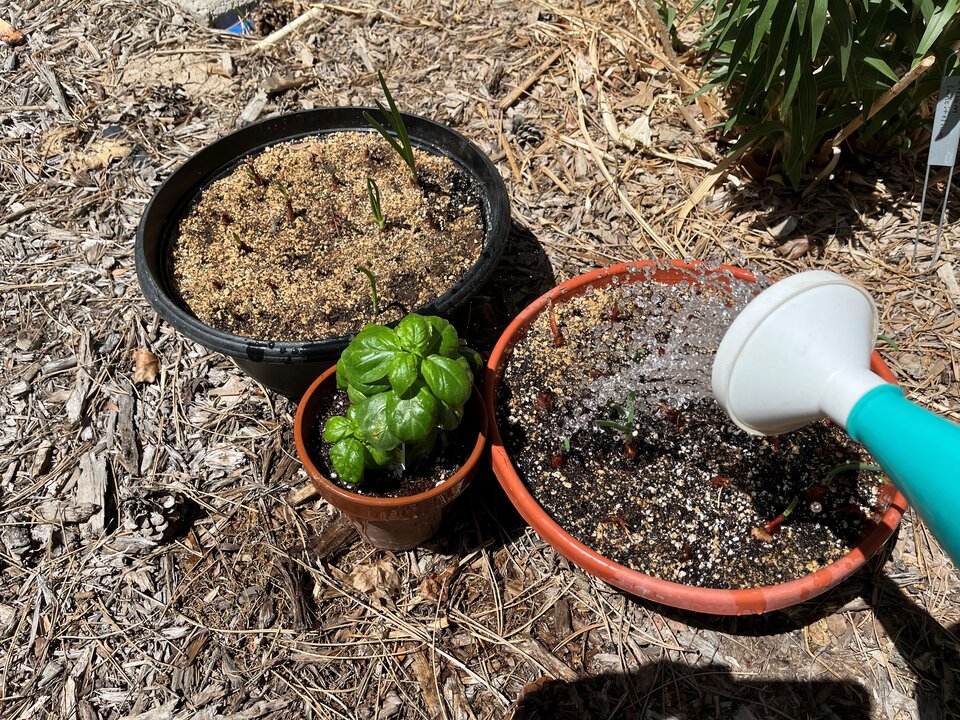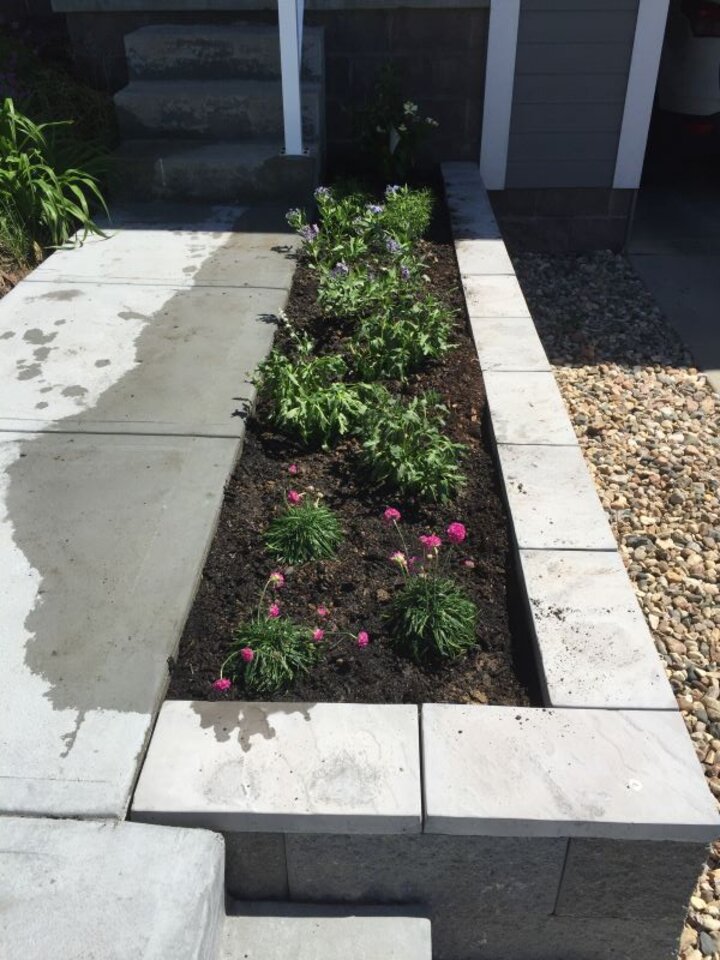Watering New Plants

One of the most important factors in getting plants off to a good start is watering. Overall, the best guidance is to water to the bottom of the roots and to keep the roots of new plants moist, not soggy or dry. Inserting a screwdriver into the soil will help with determining the moisture content by gaining a sense required to push it in and also to feel the soil particles that stick to the blade. If they feel muddy, then water is likely being applied too often; if it’s dry and powdery, then it needs to be applied more frequently.
Are there exceptions? Yes, most certainly, but not usually in the first year during establishment. There are quite a few plants that grow best in dry shade or even full sun and dry soils, such as buffalograss, lavender and sedum, which tend to like soils a bit on the dry side. However, even dry-preferring plants need moist soils during the establishment phase in order to encourage a robust root system.
Specifically, new vegetable plants need moist soils to get established and then require more water during formation and growth of the edible parts of the plant. Snap beans and cucumbers require adequate moisture during pollination and fruit formation. Others such as tomatoes need even watering during the entire season to encourage robust root development and to prevent problems with blossom end rot.

During establishment of new lawns, the key to success is light, frequent watering, especially on slopes. This usually means 5-minute sprinklings 3 times a day. Another important factor is to realize that Kentucky bluegrass requires about 20-25 days to germinate and grow; perennial ryegrass and tall fescue more in the 10-15 day timeframe. If the grass seed mix contains two of these components, it’s essential that frequent watering is continued until all grasses have germinated, otherwise only the species that require shorter lengths of time will become established. After germination, the number of times of watering per day can be gradually decreased and the length of time gradually increased.
A good rule of thumb for new trees and shrubs is – “a thorough soaking, once a week”. Through many observations and tree planting experience, more trees are killed through overwatering than underwatering. This speaks to the common natural tendency in most humans as “tenders” or “care providers”; we tend to want to care for pets, children…and new plants, and often over-do it. The screwdriver test applies very well to tree and shrub watering.
Perennial and annual flower gardens are highly dependent on species preference when it comes to watering new specimens. Some like it moister and some drier, but all need at least one or two thorough soakings at first. Researching their preferences through references such as the Missouri Botanical Garden, the Nebraska Statewide Arboretum and other Midwest land grant universities (University of Illiniois, Iowa State University, Kansas State University, University of Missouri) and implementing their recommendations will lead greatly to the success of new plantings.
The ”Six S’s” are good overall considerations when watering new plants as well – Soil Type, Slope, Sun/Shade, Season of Year, Species and Separation of Turf and Ornamentals. Each of these will influence the depth, frequency and volume of water applied.
This article was reviewed by Nicole Stoner